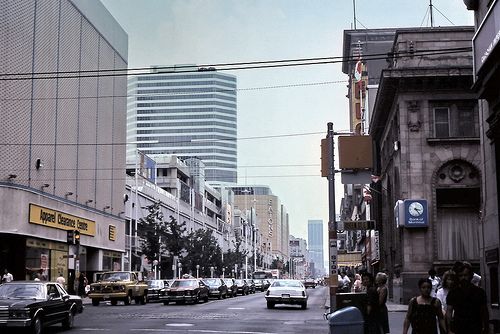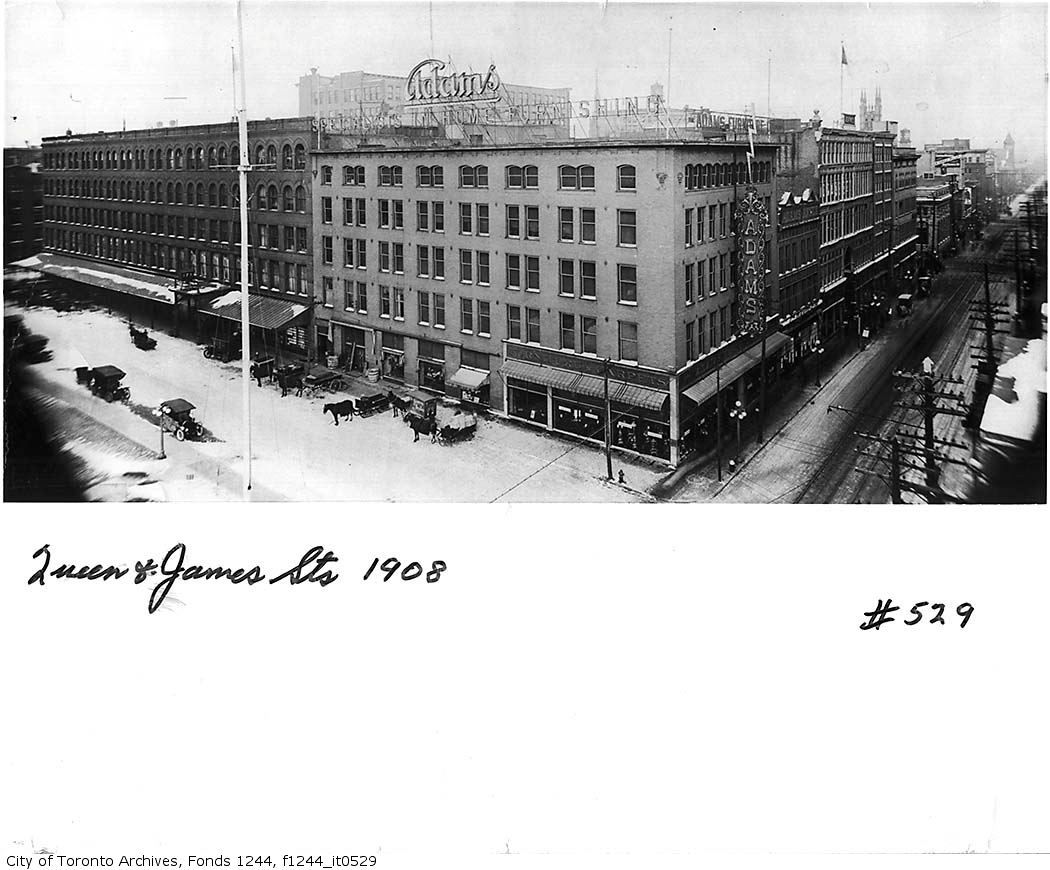I find Dresden's unusual decision to build exact replicas, compared to how most other bombed-out European cities reconstructed themselves after the war through contemporary design, kinda creepy. That said, of course, we've done some archi-cloning hereabouts too - there are a couple of repro facades on the east side of Church Street south of Front for instance. One reproduces the building in buff brick, and the central section does so in red brick. I agree about the ghastly faux fronts that replaced the perfectly honest original Eaton Centre parking levels though.
Not sure what the "creep"-factor is in the case of Ypres and Dresden, US. I think this is really a philosophical discussion about authenticity and honesty. I would ask the question that if the Cloth Hall or the Frauenkirche had suffered a disastrous peacetime fire, instead of a wartime bombing, would you be against restoring the buildings (were you against restoring those portions of Windsor Castle following its fire)? Is it a question of how much is being rebuilt (30% rebuilding OK, 50% questionable, 80% a no-no)? Is it that the anti-war "message" of a bombed-out church so powerful, that it supercedes the urban and architectural delight of the restored or recreated building?
We know that the Japanese had a tradition of demolishing and rebuilding significant buildings. In the West, it seems that the penchant for historical recreation was particularly Victorian (I know, US, your least favourite period), with Viollet-le-Duc leading the charge with his recreation of Carcassone upon the ruins of the medieval city and numerous churches and cathedrals being "restored" back to what was considered their appropriate era.
What about the cases where the destruction of the original building was an act of political malfeasance (like in the case of the East German communisits demolishing the Royal Palace in Berlin) or simply a colossal mistake (like Penn Station)? Would it be inauthentic or dishonest to recreate these complexes because they don't express today's
zeitgeist as the Modernist mantra goes? Would the recreation of the Berlin Palace be acceptable if only the facades and domes were being built (for urban design reasons in relation to how the Palace framed the Lustgarten, Dom and Altes Museum) but the interior was designed by Norman Foster (or should the entire massing be "modern"?
I admit to a certain ambivalence myself, however, if I could wave the proverbial magic wand and have the blocks bounded by Yonge, Church, Front and Wellington recreated (and let's throw in Toronto Street, the Odeon Carlton, the Temple Building and the Mechanics Institute), I'd do it, because the architectural, urbanistic and "historical" aspects would be so superior to what we have there now.
Front Street East (now Berczy Park):

























